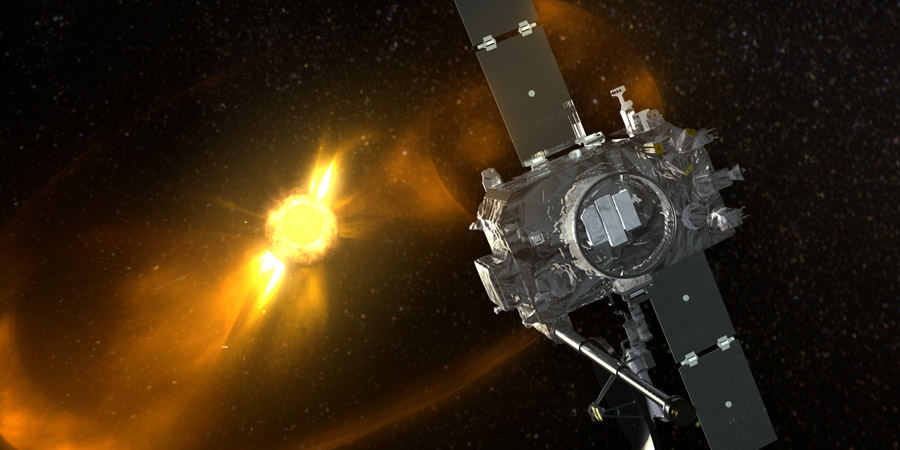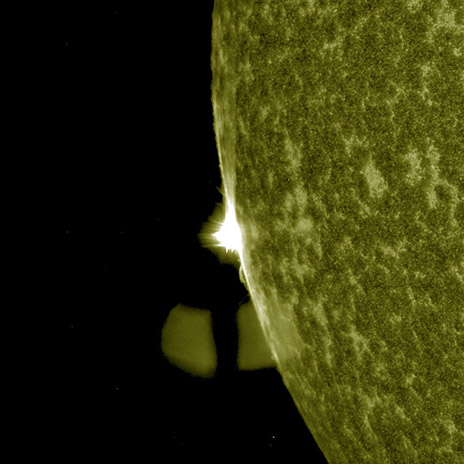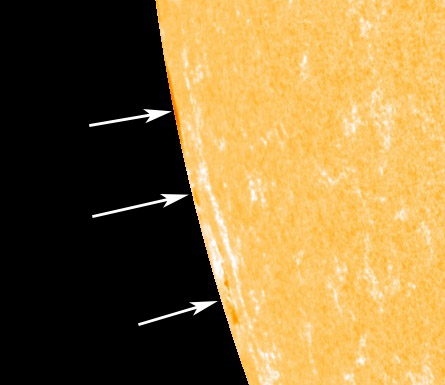STEREO Behind malfunction, M4.3 solar flare
Thursday, 16 October 2014 18:07 UTC

Solar activity reached again moderate levels thanks to a very impulsive M4.3 (NOAA R1-minor radio blackout) solar flare at 13:03 UTC. We also have some disturbing news from NASA regarding the STEREO Behind spacecraft.
STEREO Behind malfunction
It has been well over two weeks since we last received data from the STEREO Behind spacecraft, one of two spacecraft which keep an eye on the farside of the Sun. A statement from NASA on the official STEREO website states that an anomaly occurred after a planned reset which resulted in a loss of communications with STEREO Behind. NASA is currently attempting to recover the spacecraft. Below you can read the full statement from NASA:
Communications with the STEREO Behind spacecraft were interrupted on October 1, immediately after a planned reset of the spacecraft performed as part of a test of solar conjunction operations. The cause of the anomaly is not yet known, though a sensor anomaly in the guidance and control system is suspected. Attempts to recover the spacecraft are continuing.
We wish the STEREO team good luck in their efforts to bring STEREO Behind back online.
STEREO Ahead
The STEREO Ahead spacecraft is functioning normally but the amount of data being send back to Earth is limited because the spacecraft is now almost directly behind the Sun as seen from Earth. This means that STEREO Ahead can no longer directly point it's antenna towards Earth, causeing a dramatic loss in the amount of data that can be send back to Earth. As scheduled right now, there will be no data at all from STEREO Ahead between 22 March 2015 and 14 July 2015 as the spacecraft will then be exactly behind the Sun. STEREO imagery can be accesed here.
M4.3 solar flare
There is something brewing behind the east limb. Following yesterday's M1 and M2 solar flares we saw today yet another moderate solar flare from one of two sunspot regions (likely old sunspot region 2172 or 2173) that are now becoming visible on the east limb. It was a very impulsive M4.3 (NOAA R1-minor radio blackout) solar flare. A minor coronal mass ejection is possible based on SDO data but it will of course directed away from Earth. This location was also responsible for a C6.4 and a C7.7 solar flare today. The C7.7 solar flare was associated with a Type IV Radio Emission.

The first sunspots are now rotating into view but it will still take at least 24 hours before we can really see how this group looks like. There is some faculae to be seen which could indicate this sunspot region (or sunspot regions) is in decay but this can not be said for sure as of now. All the other sunspot regions currently on the earth-facing solar disk are unremarkable. Any future solar flares will likely be centered at this incoming sunspot region. For more SDO imagery visit this page. Follow us on Twitter for live solar flare alerts.

Images: NASA SDO.
NOAA SWPC alerts
SUMMARY: 10cm Radio Burst Begin Time: 2014 Oct 16 1301 UTC Maximum Time: 2014 Oct 16 1301 UTC End Time: 2014 Oct 16 1302 UTC Duration: 1 minutes Peak Flux: 180 sfu Latest Penticton Noon Flux: 126 sfu
Thank you for reading this article! Did you have any trouble with the technical terms used in this article? Our help section is the place to be where you can find in-depth articles, a FAQ and a list with common abbreviations. Still puzzled? Just post on our forum where we will help you the best we can!
Latest news
Latest forum messages
Support SpaceWeatherLive.com!
A lot of people come to SpaceWeatherLive to follow the Sun's activity or if there is aurora to be seen, but with more traffic comes higher server costs. Consider a donation if you enjoy SpaceWeatherLive so we can keep the website online!

Space weather facts
| Last X-flare | 2025/03/28 | X1.1 |
| Last M-flare | 2025/04/22 | M1.3 |
| Last geomagnetic storm | 2025/04/21 | Kp5+ (G1) |
| Spotless days | |
|---|---|
| Last spotless day | 2022/06/08 |
| Monthly mean Sunspot Number | |
|---|---|
| March 2025 | 134.2 -20.4 |
| April 2025 | 126.5 -7.7 |
| Last 30 days | 124.6 -4.5 |


